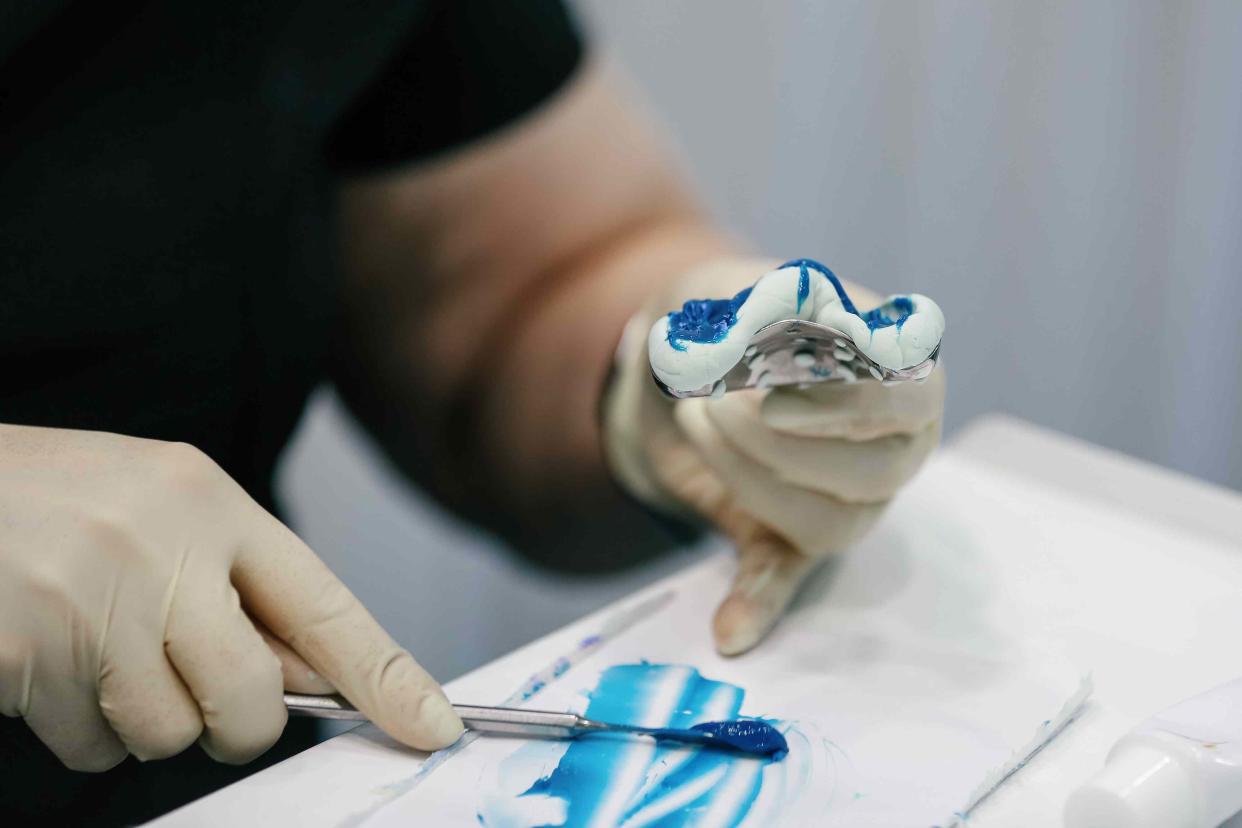This Cavity-Fighting Liquid Will Cost Less Than Dental Sealants

Elena Popova / Getty Images
- Oops!Something went wrong.Please try again later.
Fact checked by Nick Blackmer
Key Takeaways
New research shows silver diamine fluoride (SDF) is as effective as dental sealants at stopping tooth decay.
SDF works just as well but is cheaper and easier to apply than dental sealants.
Dental sealants last a couple of years, while SDF needs to be administered twice a year.
According to a recent school-based study, a dental treatment called silver diamine fluoride (SDF) is just as effective as traditional sealants at preventing the spread of cavities. And if that wasn’t enough to smile about, SDF is also easier to use and cheaper than sealants.
For the study, researchers applied either a 38% SDF solution or therapeutic dental sealants to over 4,000 low-income minority children in a New York school setting. The results showed that SDF was just as effective as traditional sealants at preventing the spread of cavities in kids—a finding that the researchers say will transfer to adult populations.
“Silver diamine fluoride’s effect is almost immediate,” Richard Niederman, DMD, a professor at the Department of Epidemiology and Health Promotion at New York University College of Dentistry, told Verywell. “Think of it as infection control. Our data indicates that silver diamine fluoride can prevent 80% of cavities and reduce cavities by 50% when applied three times.”
Related: Rotting Teeth: Signs, Symptoms, and Treatment
What Is Silver Diamine Fluoride?
SDF is a colorless, alkaline antibacterial liquid consisting of silver, fluoride, and ammonia. It’s a Class II medical device approved by the Food and Drug Administration (FDA) for the treatment of tooth sensitivity, but dental professionals often use it off-label to help stop the progression of cavities in both children and adults.
The application process is simple, but it must be done by a licensed clinician. The first step is to place the liquid on the tooth surface, followed by a one-minute soak. Then, a fluoride varnish is added.
The whole process is much simpler than traditional resin dental sealants, which can be time-consuming and technique-sensitive.
“In our practice, we use SDF on patients with active decay,” Kila Wells, a registered dental hygienist in California, told Verywell. “However, it isn’t as effective when used on deep decay. We especially use it a lot on our elderly population.”
Related: 12 Common Dental Problems and How to Prevent Them
Is SDF Better than Traditional Sealants for Adults?
While SDF is cheaper and faster than dental sealants, there are some key differences between the two, including what they do and how long they last.
The main difference is that SDF is used to stop tooth decay that’s already started (usually, the term “arrest” is used). Dental sealants are routinely used to prevent cavities from forming in the first place.
A key way that sealants and SDF differ is by their mechanisms of action. “Dental sealants protect and are superficial by nature, while SDF penetrates the tooth structure from the outside and reaches below the surface,” Tyrone Rodriguez, DDS, an American Dental Association Consumer Advisor spokesperson, told Verywell.
A potential downside of SDF is that it needs to be applied at least twice a year to be effective at halting the progression of existing tooth decay.
“It is recommended that the application of SDF be applied on a biannual basis, while the application of dental sealants can often last for several years before needing to be reapplied,” said Rodriguez.
Related: What Is a Cavity? Causes, Treatment, and Prevention
Why Preventing Cavities Matters
Dental caries or cavities—the little holes in the tooth caused by the breakdown of enamel—is a preventable disease but also a very common one. More than 50% of children ages 6–8 in the United States have cavities, with higher numbers in minority populations.
Treating existing cavities and preventing more from developing is important because untreated caries can have negative health effects:
Infection
Tooth loss
Problems with speaking and eating
Limit playing and learning in children
Increase risk of heart disease
Weakened immune system
Since many children and adults are unable to get routine dental care, public health programs that administer SDF to people with signs of tooth decay can be a game-changer for improving quality of life and overall health and wellness.
Fluoride is one of the best ways to prevent cavities because it protects the enamel on the tooth surface from the acids in food. That’s why you’ll see many public health initiatives to increase the amount of fluoride in our daily lives, including community water fluoridation programs and school-based dental care programs to administer fluoride directly, which is important when families have barriers to visiting a dentist.
According to Niederman, fluoride comes in many forms with different efficacies:
Fluoride toothpaste reduces cavities by 20%
Water fluoridation reduces cavities by 25%
Fluoride varnish (administered by a professional) reduces cavities by 40%
Silver diamine fluoride reduces cavities by 80%
Whether SDF or sealants are right for you or your family depends on your overall health and dental care needs. If you’re not sure, it’s best to ask your dentist or hygienist for advice. If you don’t have access to regular dental care, check with your state department of public health to find out where you can get low-cost or even free dental care.
What This Means For You
The use of either SDF or dental sealants depends on your dental needs and the overall health of your teeth. Talk with your dentist or hygienist about which treatment will help you take care of your smile best.
Read the original article on Verywell Health.

